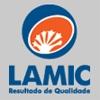Explore all the information on
Mycotoxins in feedstuffs
Welcome to the page about Mycotoxins in feedstuffs of Engormix; a source of knowledge on Mycotoxins in feedstuffs.
INTRODUCTION Food security has become a very important issue worldwide and the potential effects of climate change on yields and quality of food is now receiving significant attention by scientists, especially from a risk analysis perspective. The moldy contamination of staple foods such as cereals has received attention because of their acute and chronic effects in humans and animals. Indeed, the increasing use of staple crops, especially maize for biofuel production, has put...
Comments : 1
Recommendations: 2
Using milk thistle to reduce liver damage from mycotoxins Mycotoxins not only reduce animal performance, but they also cause significant liver damage. The seeds of the herb plant milk thistle contain a mixture of flavonolignans known assilymarin and can help inreducing liver damage when animals get in contact with mycotoxin contaminated feed. Mycotoxins are a constant problem in cereals causing economic losses to the global animal industry. Mycotoxins are produced by filamentous...
Comments : 0
Recommendations: 0
In 2018, 430 randomly collected feed samples of raw materials and feed mills in farms were analyzed. Samples were tested for aflatoxins (B1, B2, G1, and G2), zearalenone, fumonisins (B1, B2, and B3) and deoxynivalenol by the ELISA Mycotoxin analysis kit (Romer Labs ® ). Results Of 430 feed samples collected, 90.9% were contaminated with deoxynivalenol (table 1). The maximum concentration of deoxynivalenol was over the limit of quantification in this...
Comments : 7
Recommendations: 3
Jog Raj, R&D Manager at PATENT CO. describes the main challenges producers face in the feed and how PATENT CO. can help them to find customized solutions to fight back mycotoxins, during Eurotier 2018....
Comments : 1
Recommendations: 2
Olga Averkieva, Business Development Manager Mycotoxin Management at Nutriad, explains the impact of harvest quality on the occurrence of mycotoxins and introduces the solutions Nutriad offers to help producers manage the mycotoxin risk....
Comments : 1
Recommendations: 4
...
Comments : 0
Recommendations: 0
Introduction Maize is an important staple food in most countries in Africa including West Africa (Shiferaw et al., 2011) where infants being weaned off mothers’ milk rely mostly on maize flour for nutrition. Maize is often invaded by Aspergillus fungal species before and after harvest and in storage. Aspergillus species are commonly found in the soil, which acts as source of primary inoculum for infecting developing maize kernels during the growing season (Horn, 2007)....
Comments : 1
Recommendations: 1
Under ideal conditions, livestock should be fed grains and byproducts that are "clean" (i.e., free of fungi and/or mycotoxins). Although feeding clean grains and byproducts is ideal, there are times when clean grains are not available locally and farm finances do not allow for substitution of home-harvested grain with purchased grain. When grains or feeds test positive for mycotoxins, there are several approaches that can be taken to reduce the toxic effects to...
Comments : 3
Recommendations: 0
In 2017, 493 randomly collected feed samples of raw materials and feed mills in farms were analyzed. Samples were tested for aflatoxins (B1, B2, G1, and G2), zearalenone, fumonisins (B1, B2, and B3) and deoxynivalenol by the ELISA Mycotoxin analysis kit (Romer Labs®). Results Of 493 feed samples collected, 93.9% were contaminated with deoxynivalenol (table 1). All the maximum concentrations of mycotoxin were over the limit of quantification in this survey. ...
Comments : 2
Recommendations: 2
1 Introduction As a result of its nutritional properties, wheat (Triticum aestivum L.) is one of the most frequently eaten cereals all over the world by both humans and animals (Vieira, 2006). Brazil is not self-sufficient in the production of this cereal; producing less than half of its consumption needs, and such production is subject to market fluctuations. Because of milder temperatures, the southern region of Brazil accounts for 94.6% of the national production of wheat....
Comments : 1
Recommendations: 1
Shon Van Hulzen (POET) discussed mycotoxin concentrations and the accuracy and precision of the analysis in distillers grains, during the 22nd Annual Distillers Grains Symposium in Des Moines, Iowa....
Comments : 0
Recommendations: 0
Introduction Brazilian domestic bean production is about 4.0 million tonnes, and about 15% is produced during the irrigated winter crop in the Cerrado region (Companhia Nacional de Abastecimento, 2012). Fusarium wilt in common bean (Phaseolus vulgaris L.), caused by Fusarium oxysporum (Schlecht.) f. sp. phaseoli Kendrick & Snyder, is prevalent on most bean producing areas in Brazil. Losses due to the disease have been gradually rising in central Brazil, mainly under...
Comments : 0
Recommendations: 0
Introduction Mycotoxins are fungal metabolites toxic to animals. When mycotoxin-producing fungi infect crop plants or colonize stored agricultural commodities, contamination with mycotoxins creates a health risk for humans and livestock. Trichothecenes, which are often found in grains, are sesquiterpenoid mycotoxins with a 12,13-epoxy-trichothec-9-ene skeleton produced fungal genera Fusarium, Myrothecium, Stachybotrys, Trichoderma, and Trichothecium. From an economic...
Comments : 0
Recommendations: 0
Introduction Over the last decade, the increasing attention paid to safety aspects has affected cereal supply chains: the lack of adequate sanitary parameters pertaining to the presence of contaminants is actually the first cause of the decrease in the market value of cereal commodities (Pinotti and Dell’Orto, 2011). Mycotoxins and other fungal metabolites represent the most insidious safety risks for cereal food and the feed supply chain (Pinotti et al., 2016). The...
Comments : 0
Recommendations: 1
Introduction Mycotoxin contamination of food and feed poses a serious concern for animal and human health. Aflatoxins, one of the major classes of mycotoxins, have received considerable attention, but research and regulatory efforts to mitigate the impact of aflatoxins have not resulted in satisfactory reduction of this carcinogen in the food supply. Control of this disease has been problematic, owing in part to our lack of understanding of the conditions that lead to infection...
Comments : 0
Recommendations: 0
Background Soybean ( Glycine max [L.] Merrill) is a major world crop and is the second most cultivated crop in the U.S.A. following maize. Soybean production contributes billions of dollars annually to the national economy, providing approximately 21 billion dollars in 2012 (United Nations Food and Agriculture Organization website). Limitations on maximum production are largely due to disease pressures that reduce yield. Several species of Fusarium have...
Comments : 0
Recommendations: 0
Since mycotoxins were first identified in the 1960s, there has been an increased focus on contaminated feed due to global trading, increased monitoring and technology, changing agricultural practices, unexpected weather, food safety regulations and mycotoxin interactions.
Today, forage quality is a top priority on dairies as producers now recognize the risk poor feed ingredients can pose to the health and performance of lactating dairy cows.
Reductions in milk yield...
Comments : 0
Recommendations: 1
Introduction
Mycotoxins are metabolites produced by molds (fungi) that can infest crops pre-harvest and can continue to flourish under sub-optimal storage conditions. Grains with a high moisture content are particularly unstable and prone to mold proliferation and possible mycotoxin production. Excess rainfall at harvest and at key periods during the growing season can be a major promoter of mycotoxin contamination of feedstuffs. These are the same conditions...
Comments : 1
Recommendations: 2


_1.jpg&w=3840&q=75)


















